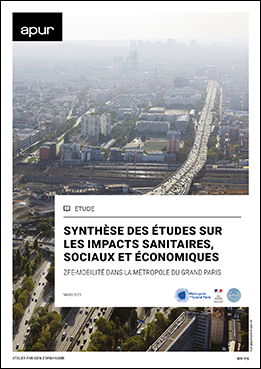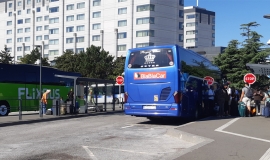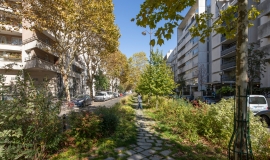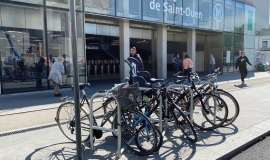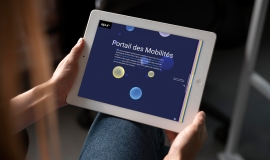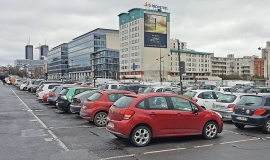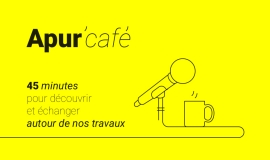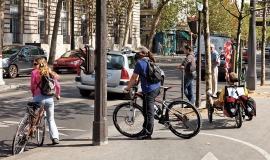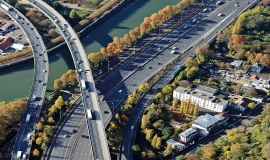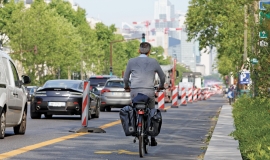To combat air pollution produced by road traffic a zone of low vehicle emission (ZFE-m), piloted by Grand Paris Metropolis, was extended to the perimeter of the A86 motorway on 1st July 2019. A new ZFE-m measure now aims to improve air quality by restricting road traffic of vehicles carrying the emission standard certificate Crit’Air 4 as from 1st June 2021. This is in addition to the restrictions already in place for Crit’Air 5 and non-classified vehicles. Apur has followed this issue since 2011 and is assisting Grand Paris Metropolis by analysing the social and economic impact of this ZFE-m.
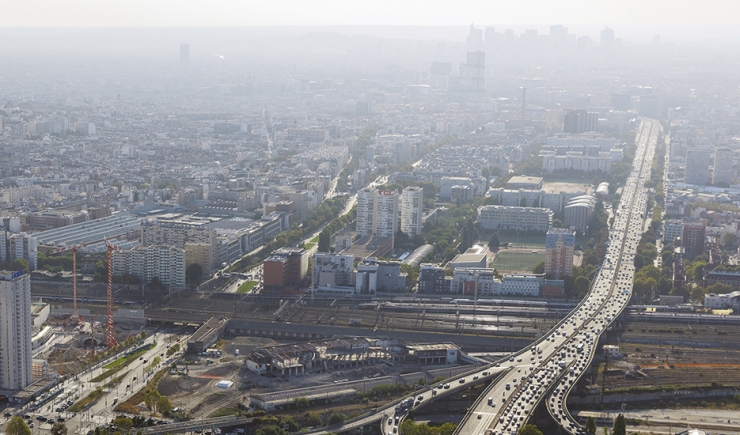
With a toll of 6,600 premature deaths¹ and 400,000 people still breathing polluted air in the Grand Paris Metropolis², improving air quality remains a major health issue. Road traffic is the source of 51% of NOX, 23% of PM2,5 and 24% of PM10³, thus making up one of the principal sources of air pollution in the metropolis, greater than the residential (heating) sector.
Confronted by these facts, the City of Paris and then Grand Paris Metropolis, decided to put in place a Low Vehicle Emission Zone (ZFE-m), one of the regulatory levers offered to local authorities by the 2015 Law on the Energy Transition for Green Growth which was reinforced by the 2019 Law on Mobility. The corresponding restrictive measures for road traffic are taken gradually, step by step, so that the population and businesses can anticipate and adapt to them.
From 1st July 2017 to 1st July 2019, Paris, then joined by local authorities, instigated the ZFE-m, limiting traffic of all Crit’Air 5 and non classified vehicles on their territory from 8 a.m. to 8 p.m, from Monday to Friday for private vehicles and 7 days a week for heavy good vehicles (HGV), buses and coaches.
For the next stage beginning 1st June 2021, which will limit traffic up to Crit’Air 4, and prior to each new stage, Grand Paris Metropolis helps municipalities provide studies of the impact on air quality (an obligatory study, carried out by Airparif), and the analysis of the social and economic consequences such as the effects on public transport, road traffic, health (an optional study carried out respectively by Ile-de-France Mobilités, DRIEA and the Regional Health Observatory -ORS-). Apur carries out studies supplying information on the vehicle fleet and sectors of the population affected by the measures and proposes the necessary support measures for the success of the scheme.
The restrictions on vehicles up to Crit’Air 4 within the A86 perimeter will involve 11% of registered vehicles in the ZFE-m, that is 269,200 vehicles⁴. These restrictions concern a limited proportion of the fleet and do not affect either the circulation of road traffic or public transport. They will however have positive effects in terms of polluting gas emissions and health benefits, with an average reduction of 5% of nitrogen oxides (NOX), 3% of PM10 particles and 4% of PM2.5 particles⁵. This represents 50,000 fewer people in the metropolis being exposed to levels of NO2 which exceed the European recommended levels⁶ and 17,890 years of life gained⁷.
The low-income sectors of the population are the first to benefit from the improved air quality in the vicinity of major roads and are more likely to be impacted by the restrictions on using old vehicles for getting around. Among low-income households in the Metropolis, 8% will own a vehicle that will be affected, that is 67,000 households⁸.
Apart from the financial measures (one-stop shop, aid for vehicle renewal) which contribute to supporting affected sectors of the population, the ZFE issue will become a tool for the ecological transition and for more inclusive and eco-friendly mobility. Beyond the renewal of the vehicle fleet which is already “naturally” taking place, the promotion of alternatives that question individual people’s mobility is a key asset of the ZFE-m. The widespread installation of electrical recharge stations, the development of cycle paths, an improved offer of clean and shared vehicles, the emergence of a variety of alternative modes of transport (micro-mobility) combined with the optimisation of inter-modality, of which digital applications and promoting car-sharing are examples of the many pertinent options.
In order to meet the objective of 100% “clean” vehicles by 2030 and beyond that to carbon neutrality by 2050, optimising travel, reducing work home distances, reviewing modes of organisation represent so many levers to be activated.

